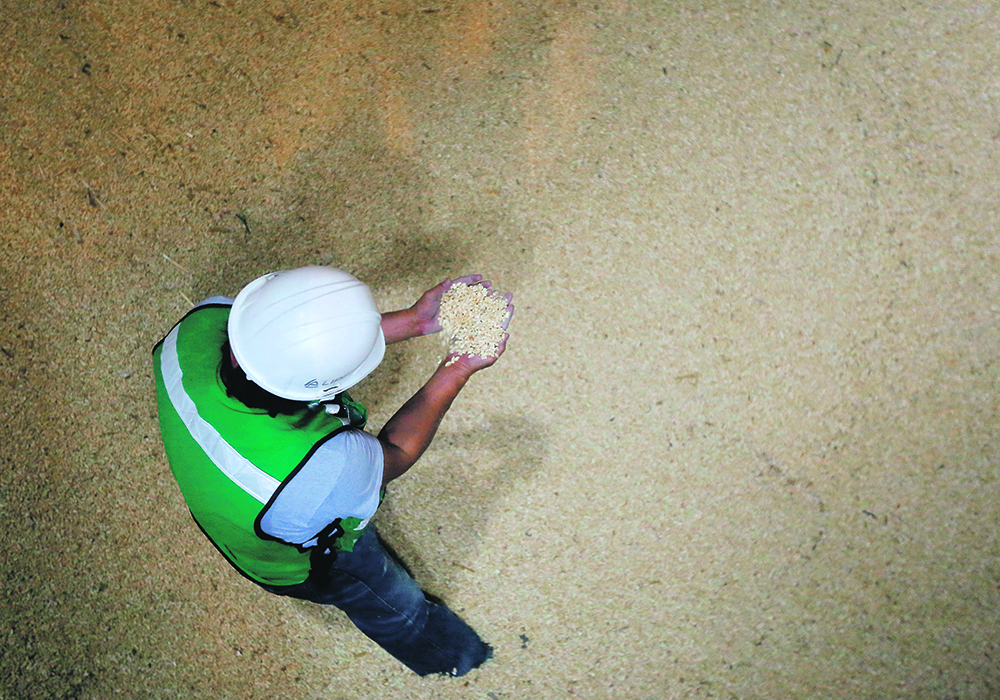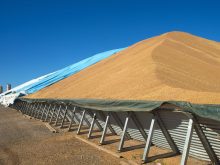The potential is seen for more fresh food shipments as well as more bulk grain to move by rail rather than ocean freight
After the ocean shipping nightmares of 2020 and 2021, railing crops and other farm products to Mexico seems a more enticing prospect than before the pandemic.
While there’s much potential for increased overland shipping between Canada and Mexico, devilish details present challenges.
“It’s much easier with manufactured products,” noted Barry Prentice, University of Manitoba professor and supply chain management expert, after the conclusion of the Fields on Wheels conference.
“There are opportunities for future growth, no question.”
Bulk grains moved easily during the pandemic’s first 20 months, but container traffic has become snarled as shipping companies prefer to ship empty containers back to China rather than wait for them to be loaded with Canadian goods, including pulse crops and identity-preserved grain.
Read Also

Agritechnica Day 3: Hybrid drive for a combine, data standards keep up to tech change and tractors of the year
Agritechnica 2025 Day 3: Hybrid drive for a combine, data standards keep up to tech change and tractors of the year.
The Fields on Wheels conference, hosted by the Transport Institute, heard little to suggest the container shortage will end soon. A host of farm organizations and commodity groups, led by Pulse Canada, have been working hard to alleviate the situation through government and other means, but no simple solution appears likely.
That makes the news of Canadian Pacific Railway’s apparently successful takeover of Kansas City Southern so joyful for many shippers. (U.S. regulators still need to approve the takeover, which is not expected for many months.)
If the west coast ports are plugged and dysfunctional, perhaps more grains, meats and foods could be sent down the rails south from Winnipeg to reach the Mexican market. Once the merger is approved, rather than involving two railway companies, goods will be able to flow seamlessly from across Canada and the central United States and deep into Mexico’s populous market.
“When you’re one railroad you can have visibility to the supply chain all the way through and your service design time, asset management team can plan further,” said Jon Harman, who oversees CP’s grain and fertilizer business.
Diane Gray, president and chief executive officr of Winnipeg’s sprawling inland transportation and distribution complex CentrePort Canada, said she sees the potential for more fresh food shipments to and from Mexico. She also sees a potential for more bulk grain to move by rail as opposed to ocean freight.
“We look forward to seeing connecting locations like CentrePort and onward… origins and destinations in the U.S. and Mexico and see that rail percentage (of inter-country trade) just grow,” said Gray.
Right now, 13 percent of Canada-Mexico grain trade goes by rail. The rest goes through Canadian ports, through the ocean and then back into Mexico by port.
Kevin Kuly, who is championing efforts to build a “TMEC corridor” of a Mexican Pacific port, distribution hub and much-beefed-up rail system connected to the U.S. and Canadian system, said integrating trade through North America could create much value.
“The TMEC Corridor intends to transform the Pacific basin transport seascape,” said Kuly. (TMEC is the Mexican term for the Canada, U.S., Mexico trade deal known in Canada as CUSMA.)
But for all the potential in Mexico, there are complicated reasons for relatively weak Canada-Mexico trade by rail. Some comes from a lack of investment and infrastructure in Mexico. Trade barriers can be a problem. And the economics don’t always work.
“Mexico has wonderful oranges and tangerines. We never get them (in Canada) because they’re not allowed to cross the United States,” said Prentice.
“There are some other phytosanitary barriers like that as well. There are some limitations that are outside of our control.”
Mexico lacks refrigerated storage facilities that are essential for much perishable food trade. That infrastructure is expensive and slow to build.
“Investment in refrigerated facilities is the most important for us,” said Gaston Cedillo, a Mexican rail logistics expert.
“If we want to export to Canada or the U.S., we need a very strong network of these kinds of facilities.”
But some of the economics don’t work for easy gains to trade, Prentice said. The U.S. sits between Mexico and Canada, which gives it a permanent freight advantage for most things. Canada’s biggest agricultural export to Mexico is canola seed because the U.S. has little to sell. Huge amounts of wheat are grown in the U.S., leaving Canada to sell specific types of the crop to specific buyers.
For much agriculture trade, it makes more sense for U.S. sellers to supply Mexican buyers and for Canada to fill in gaps in the U.S.
“North America is a single market,” said Prentice.
Whether or not rail shipments can substantially alter or increase Canada-Mexico trade, the long-term benefit to greater integration will be from embracing a growing market close to home within Canada’s trade agreements.
“Mexico has a substantial population and they are increasing their national income every year and as a result of that they’re becoming a bigger, more important market,” said Prentice.
“We share that.”
















